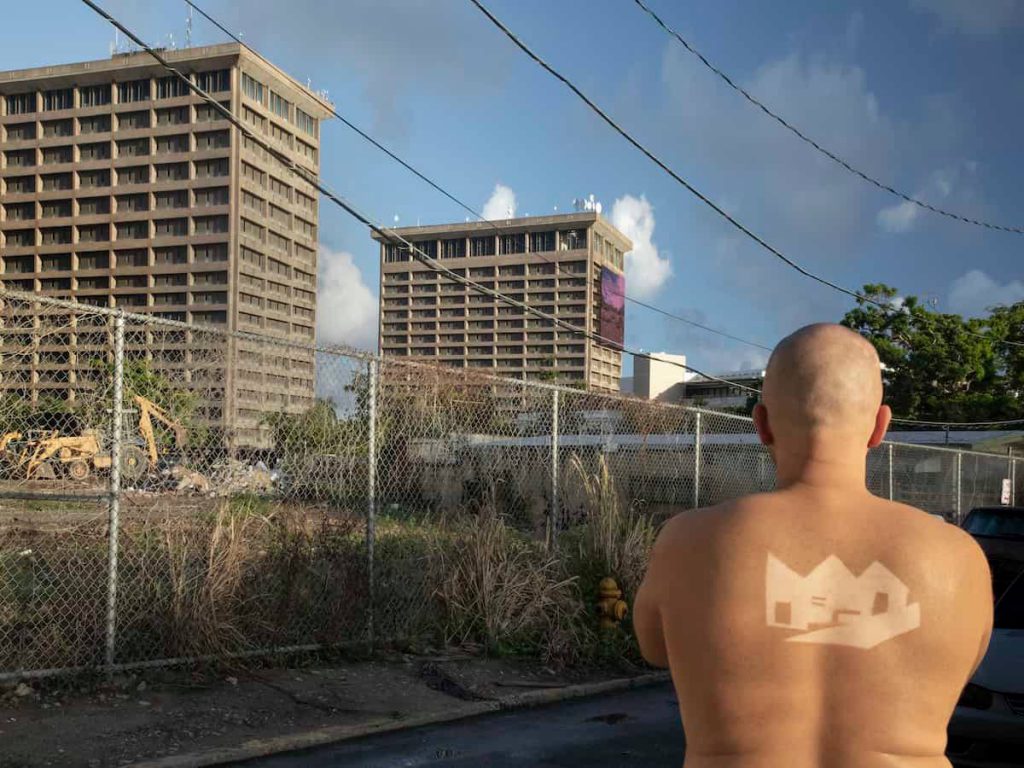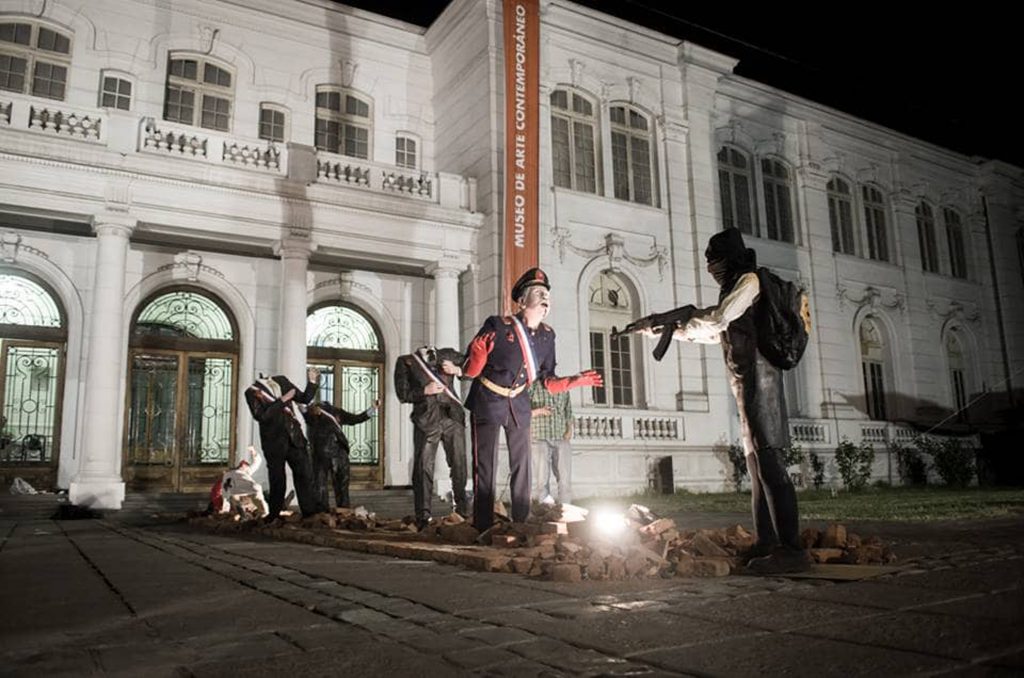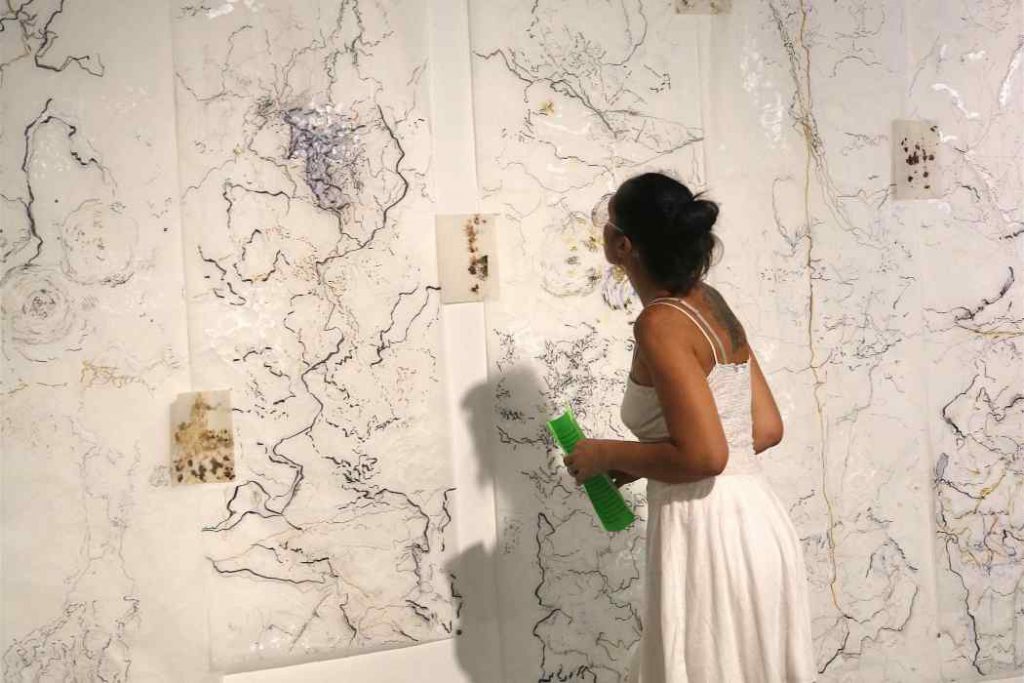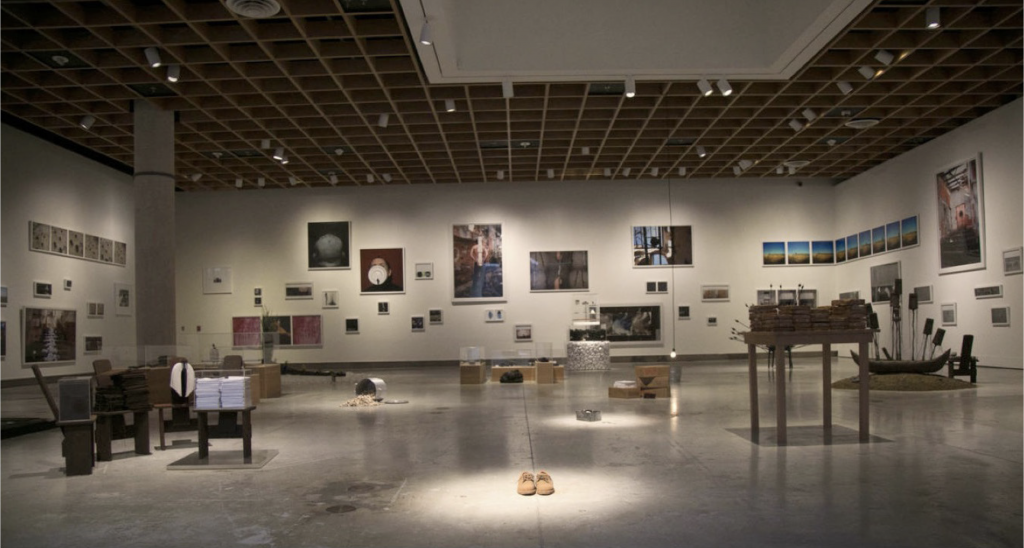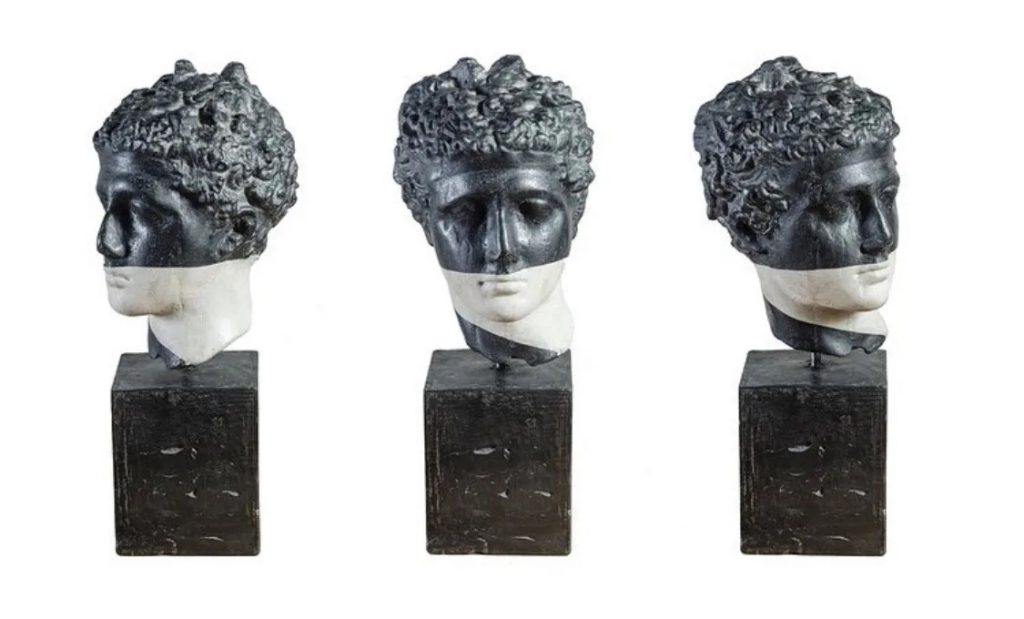Resumen: Durante siglos, el arte interpretó el paisaje como una forma de reflejar la belleza y el contexto donde habitamos. En años recientes, lo que era un ejercicio estético se ha convertido en una práctica política que cuestiona la administración, la creación y la destrucción de dicho paisaje. Norma Vila Rivero, en su serie Una metáfora contra el olvido, comenta la visualidad de nuestro entorno físico, rescatando imágenes perdidas sobre las espaldas de sus distintos individuos.
Abstract: For centuries, art have interpreted landscape as a form to represent beauty and the context in which we live. In recent years, that aesthetic exercise centered on beauty has transformed into a political practice, questioning the administration, creation and destruction of landscapes. In her series Una metáfora contra el ovido (A Metaphor Against Oblivion), Norma Vila Rivero uses performatic photography to make comment on the visuality of our physical environment, rescuing lost images on the backs of her subjects.
Tag Archives: memory
Resumen: Diferentes artistas contemporáneos, chilenos y argentinos, han desarrollado una importante producción en respuesta a los procesos de represión, violencia y crimen de Estado llevados a cabo durante los periodos dictatoriales y post-dictatoriales. En ese sentido, las artes visuales funcionan como forma de comunicación de memorias adquiridas, producto de la violencia extrema y el trauma. Las obras de estos artistas muestran la función del arte como medio de denuncia y acervo del recuerdo ante la urgencia de narrar aquello que se calificó como inexplicable o poco creíble por la brutalidad de los actos. Partiendo de la interrogante “¿cómo representar la tortura, la desaparición, la violación, la impotencia, el terror, la crueldad, la tragedia, en fin, lo acontecido en una dictadura?”, se compararán variantes a la luz de un marco teórico conceptual, integrado, entre arte, representación y memoria.
Abstract: Different contemporary artists from Chile and Argentina have worked in answer to the government repression, violence, and crimes that took place during the dictatorial and post-dictatorial periods in those countries. In this sense, visual arts work as a form of communication of acquired memories, as a result of the extreme violence and trauma experienced. These artworks show how the arts work as a means of denunciation and collecting memories given the urgency of narrating what has been described as something inexplicable or unbelievable, given the brutality of the acts. In answer to the question of how to represent torture, disappearance, rape, impotence, terror, cruelty, tragedy; in short, what happens in a dictatorship, a range of elements will be compared within a conceptual and theoretical framework integrating art, representation, and memory.
Resumen: La apertura de la reciente exhibición de Elizabeth Robles en la Galería Delta de Picó de la Liga de Arte, en San Juan, provoca una sinestética respuesta de la autora, envuelta en la ruptura tradicional de distintos medios y en la experiencia de la huella de tres viajes de la artista, presentados, en conjunto, en sus salas.
Abstract: The opening of the recent exhibition of Elizabeth Robles, at the Delta de Picó Gallery of the Art League, in San Juan, provokes a synesthetic response from the author, wrapped in the traditional rupture of different media and in the experience of the trace of three trips of the artist, presented, together, in its rooms.
Resumen: Los treinta años de la producción artística de Víctor Vázquez evocan asuntos tradicionales de la historia del arte, como el viaje o la muerte. Sin embargo, estas influencias se plantean desde una perspectiva arriesgada e irreverente en lo que a los cánones de las autobiografías o las retrospectivas se refiere, haciendo uso de los mecanismos de la memoria como metáfora para construir su propia historia.
Abstract: Thirty years of Víctor Vázquez’s artistic work evoke traditional topics in art history, such as travel or death. However, these influences come from a bold and irreverent perspective in terms of canonical autobiographies or retrospective exhibitions, using the mechanisms of memory as a metaphor to make his own story.
Resumen: Garvin Sierra presenta en la Galería Francisco Oller, del Recinto de Río Piedras de la UPR, su reciente producción artística: Falsos Positivos. El artista invita al público a un íntimo recorrido por un peculiar cuarto de maravillas, donde se encuentran falsas identidades y positivos recuerdos. A través del uso de los espejos y de otros elementos, Sierra interviene fotografías como el sujeto mismo interviene con sus memorias: en fragmentos.
Abstract: Garvin Sierra is showing his recent work, False Positives, at the Francisco Oller Art Gallery, in UPR – Río Piedras Campus. The artist invites viewers to an intimate tour of a peculiar wonder room, where false identities and positive memories are found. Through the use of mirrors and other elements, Sierra intervenes photographs as the subject himself intervenes with his memories: in fragments.
Abstract: Roberto Silva returns to Puerto Rico with Reducto, an exhibition that opened on June 2nd at the Artífice Gallery in Old San Juan. We met the artist to discuss the importance of memory as a creative impulse, and the role of the artist as an agent reclaiming the pictorial tradition. Originally published in Spanish in June 2016.
Resumen: Roberto Silva regresa a Puerto Rico con la exhibición Reducto, cuya inauguración tuvo lugar el pasado 2 de junio en la Galería Artífice del Viejo San Juan. Nos reunimos con el artista para abordar la trascendencia de la memoria como impulso creador y el papel del artista como agente reivindicativo de la tradición pictórica. Publicado originalmente en español en junio de 2016.
Resumen: Roberto Silva regresa a Puerto Rico con la exhibición Reducto, cuya inauguración tuvo lugar el pasado 2 de junio en la Galería Artífice del Viejo San Juan. Nos reunimos con el artista para abordar la trascendencia de la memoria como impulso creador y el papel del artista como agente reivindicativo de la tradición pictórica.
Abstract: Roberto Silva returns to Puerto Rico with Reducto, an exhibition that opened on June 2nd at the Artiífice Gallery of Old San Juan. We met the artist to discuss the importance of memory as a creative impulse, and the role of the artist as an agent reclaiming the pictorial tradition.

